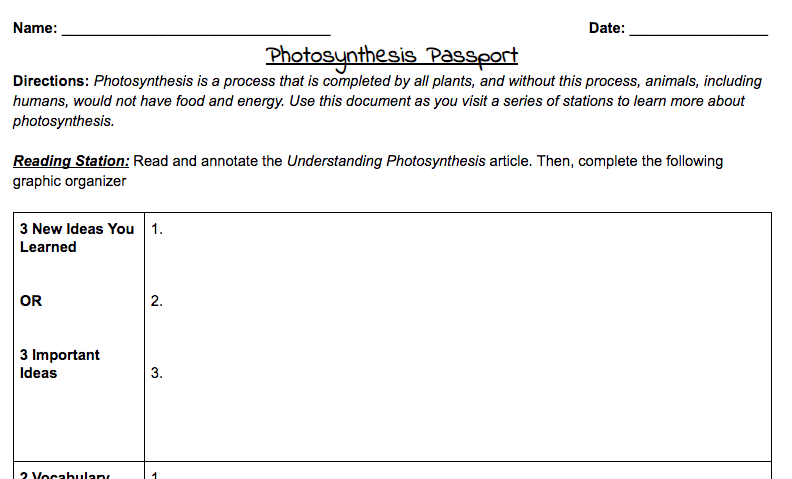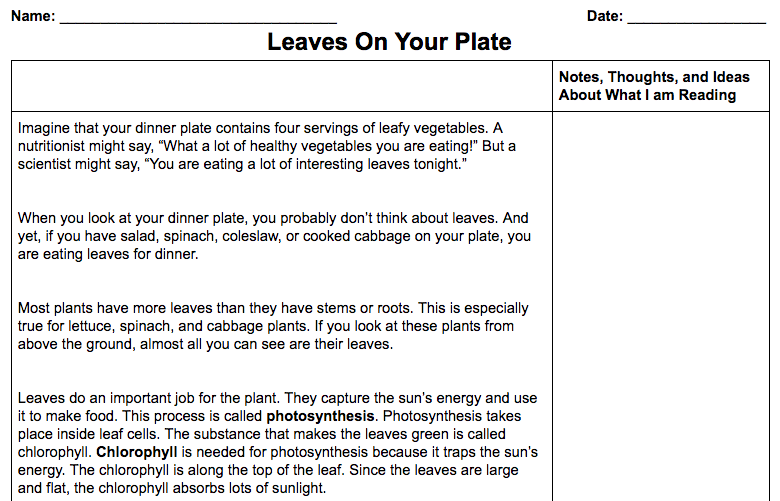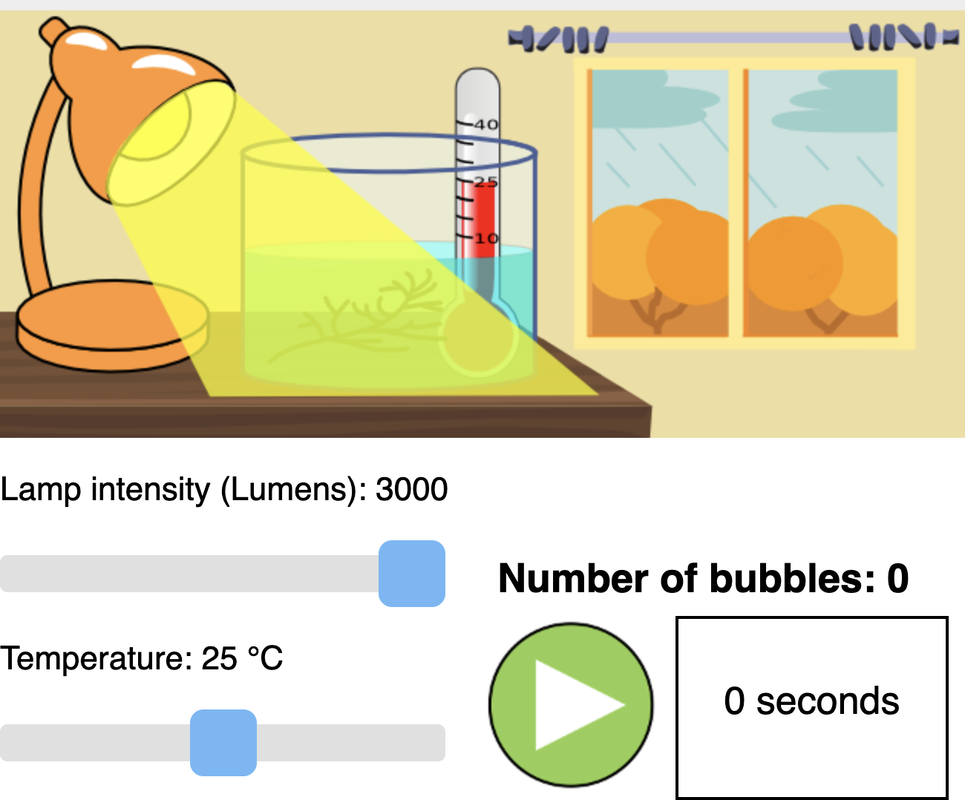photosynthesis passport
The process of photosynthesis is essential for all life on Earth. Without this process, plants and other autotrophs would not be able to grow and the nutrients they provide to heterotrophs would not be available. Use the following resources to learn more about this important process.
Reading station resources
Video station resources
Watch one or both videos, and take notes on your Photosynthesis Passport.
|
|
|
Lab station resources
|
Use the lab simulator by clicking on the thermometer to adjust temperature and drag the slider to adjust the amount of light. Use the following procedures to collect data: Part 1: The Effect of Light Intensity on Photosynthesis
Part 2: The Effect of Temperature on Photosynthesis
|



